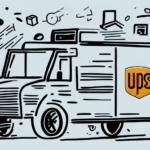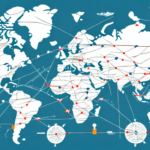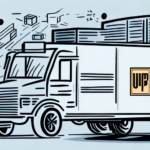How to Reduce Your UPS Insurance Costs
Are your UPS insurance costs too high? In this article, we'll explore effective strategies to reduce your expenses while ensuring you maintain the necessary level of coverage. Let's begin by understanding your current UPS insurance costs.
Understanding Your Current UPS Insurance Costs
To start, it's essential to know how UPS calculates your insurance costs. These fees are based on several factors, including:
- Value of the Shipment: Higher-value items incur higher insurance costs.
- Destination: International shipments often come with additional fees compared to domestic ones.
- Level of Coverage: The extent of insurance coverage you choose directly affects your premiums.
- Claims History: A history of frequent claims may increase your rates.
- Frequency of Shipments: Regular shippers might benefit from discounted rates.
According to UPS's official guidelines, understanding these factors can help you identify areas where you can potentially lower your insurance premiums. Let's take a closer look at each factor that affects your UPS insurance costs.
Identifying the Factors that Affect Your UPS Insurance Costs
Several elements influence your UPS insurance rates:
- Value of the Shipment: Shipping high-value items will naturally result in higher insurance fees.
- Destination: International destinations may incur additional insurance costs due to increased risks.
- Level of Coverage: UPS offers various coverage options, from basic to comprehensive, affecting the overall cost.
- Mode of Transportation: Air shipments typically have higher insurance costs compared to ground transportation due to the increased risk of damage or loss.
- Packaging Quality: Secure packaging can reduce the likelihood of damage, potentially lowering insurance costs.
By understanding these factors, you can implement strategies to manage and reduce your UPS insurance expenses effectively.
Tips for Lowering Your UPS Insurance Premiums
Implementing the following strategies can help you reduce your UPS insurance costs:
- Secure Packaging: Properly packaging your items can prevent damage during transit, leading to lower insurance claims and premiums.
- Utilize UPS Packaging Services: Using UPS's recommended packaging services can provide added protection and may qualify you for discounted insurance rates.
- Negotiate with UPS: If you are a frequent shipper or handle large volumes, negotiate with your UPS representative for better rates based on your shipping history and volume.
- Assess Your Coverage Needs: Evaluate whether you need comprehensive coverage or if a basic plan suffices for certain shipments.
- Implement Best Practices: Train your employees on proper handling and packaging techniques to minimize the risk of claims.
- Review Deductibles: Opting for a higher deductible can lower your premiums, but ensure it aligns with your financial capacity to cover potential claims.
According to industry reports, businesses that actively manage their shipping and insurance practices can achieve significant cost savings annually. Implementing these tips can help you maintain adequate coverage while keeping expenses in check.
Choosing the Right Type of UPS Insurance Coverage for Your Business Needs
Selecting the appropriate UPS insurance coverage is crucial for protecting your business assets. Consider the following:
- Shipment Volume: High-volume shippers may benefit from tailored insurance plans.
- Item Value: Assess the average value of your shipments to determine the necessary coverage levels.
- Destination: Frequent international shipments may require specialized insurance options.
- Type of Items: Fragile or high-value items, such as electronics or artwork, may necessitate comprehensive coverage.
Consult with your UPS representative to determine the ideal level of coverage for your business. Additionally, compare quotes from different UPS insurance providers to ensure you are getting the best value for your coverage.
Evaluating the Reputation and Customer Service of Your UPS Insurance Provider
Beyond cost considerations, it's vital to assess the reputation and customer service quality of your UPS insurance provider. Here's how:
- Read Online Reviews: Check feedback from other customers to identify any recurring issues or commendations.
- Assess Claim Processing: A provider known for prompt and fair claim handling can save you time and stress during disputes.
- Customer Support: Ensure the provider offers reliable and accessible customer service for any queries or issues.
Choosing a reputable provider ensures that your insurance claims are handled efficiently and that you receive the support needed to manage your shipments effectively.
Reviewing and Updating Your UPS Shipping Procedures and Protocols
To further reduce the likelihood of incidents that could increase insurance costs, regularly review and update your UPS shipping procedures and protocols:
- Employee Training: Train your staff on proper handling and packaging techniques to minimize damage risks.
- Shipment Tracking: Implement robust tracking systems to monitor your shipments in real-time.
- Regulatory Compliance: Ensure compliance with all relevant regulations, including those for hazardous materials and international shipments, to avoid fines and delays.
- Cost Optimization: Regularly evaluate your shipping costs and explore ways to optimize processes, such as negotiating better rates or consolidating shipments.
By maintaining efficient and compliant shipping procedures, you can reduce the risk of claims and associated insurance costs.
Conclusion
By following the strategies outlined above, you can effectively reduce your UPS insurance costs without compromising on the quality or level of coverage you need. Key actions include:
- Negotiating with your UPS provider for better rates.
- Assessing and adjusting your coverage needs based on shipment value and frequency.
- Implementing best practices to minimize the risk of damage and claims.
- Regularly reviewing and updating your shipping procedures to ensure efficiency and compliance.
Remember, while reducing insurance costs is important, ensuring adequate coverage for your shipments is equally crucial. Balance cost-saving measures with the need to protect your business assets effectively. Additionally, investing in technology such as GPS tracking and real-time delivery updates can provide greater visibility into your shipments, helping you proactively address issues and minimize risks.
For more detailed insights on optimizing your UPS shipping rates, visit our comprehensive guide on UPS shipping strategies.




















